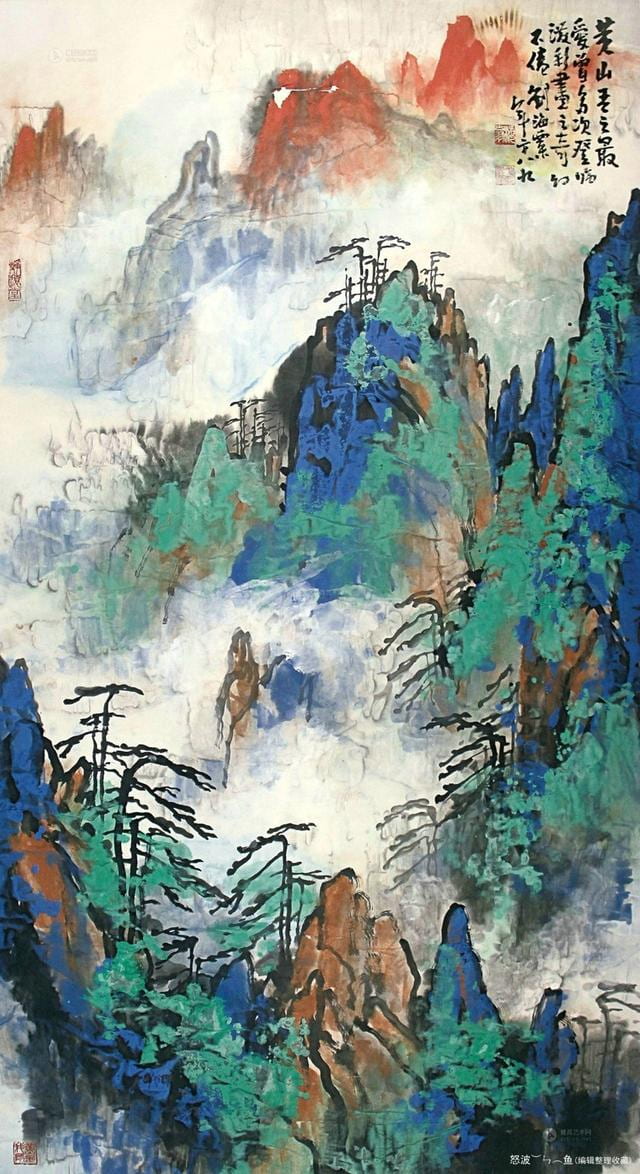
In the late years of Liu Haisu’s career, he was fond of Mountain Huang, which was one of the most famous mountains in China. Liu Haisu climbed mountain Huang for 10 time and made one of his most important series about the mountain. The painting blew is one of the paintings Liu Haisu made about Mountain Huang.
As one of the earliest Chinese artists who had systematical western art education, Liu Haisu was profoundly influenced by oil painting techniques, as well as Chinese traditional paintings. He believed that the western oil painting skills are consistent with traditional Chinese paintings. In this painting, Liu Haisu ultilized oil painting skills in a traditional Chinese painting format. First of all, the structure and the depiction of the foggy mountain are typical tradional Chinese painting skills. Rather realistically portrait the shape of mountain, Chinese paintings are more interested in perusing the “shensi”(spiritually like) of it. In this painting, the shape of the mountain is blurred by brush stokes, and the leave blank does not just keep a balance in color and structure of the painting, but also created a mysterious atmosphere for the whole image. Rather than western oil paintings, Liu Haisu did not draw the mountain, but “wrote” it. The audience are able to see enough evidences that the artist ultilized the similar skills in Chinese calligraphy in the brush strokes of this painting, which is a unique technique in traditional Chinese paintings, and it works gorgeously when Liu Haisu used it on oil painting. Furthermore, the way Liu Haisu deal with the color and light in this painting was revolutionary, and it is so interesting that it is influenced by western art movements such as Impressionism movement significantly. In traditional Chinese paintings, the light and color change are usully expressed by different ratio of ink and water. The ultilzation of oil painting colors enhanced the expression of the mountain and light, and it provided the painting better depth. As a painting did by Liu Haisu in his late years, the audiences are able to see the surpberb painting skills of the artist and a great combination of traditional Chinese paintings and western oil painting techniques and concepts.
Resources: http://art.ifeng.com/2015/1111/2598840.shtml


I like the way you talk about how your artist’s paintings were a combination of traditional Chinese paintings and western oil painting concepts and techniques. Although the piece I analyzed is one of Pan Yuliang’s more western paintings, many of her paintings were, like Liu Haisu, a mix of western training and Chinese culture. I found your description of Liu Haisu’s technique very interesting and in the future, I would be interested in looking more at how the artist created their work instead of just what they painted.